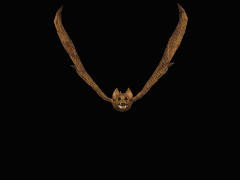


Procellariiformes:Procellariiformes (from the Latin procella, a storm) is an order of birds formerly called Tubinares and still called tubenoses in English.They are all highly pelagic seabirds (feeding in the open ocean), and all of them have their nostrils enclosed in one or two tubes on their straight, deeply grooved bills with hooked tips. The beaks are made up from several plates. Wings are long and narrow; feet are webbed, and the hind toe is undeveloped or non-existent. Plumage is predominantly black or gray.The tubes may be used to smell or to excrete salt when these birds drink salt water.The longer-winged species fly using a switchback technique to minimise active flapping. All eat fish, squid or similar marine prey.Most are almost unable to walk on land, and many species visit their remote breeding islands only at night. The exceptions are the huge albatrosses, several of the gadfly petrels and shearwaters and the fulmar-petrels. The latter can disable even large predatory birds with their obnoxious stomach oil, which they can project some distance. This stomach oil is a digestive residue created in the foregut of all tubenoses except the diving petrels, and is used mainly for storage of energy rich food as well as for defence.
|
